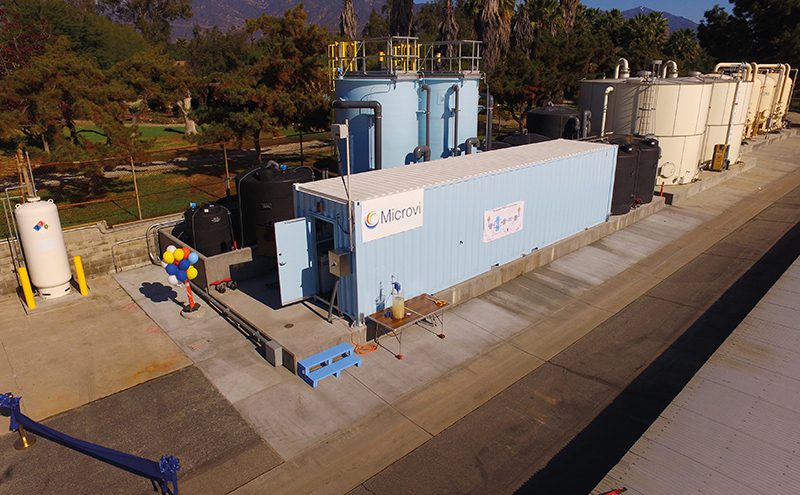
Synthetic biology has been brought to the realm of water treatment with seemingly dramatic results by Californian cleantech firm Microvi, which in late October was recognised as one of the “Hot 40”, a roster of emergent bioeconomy companies selected by a panel chosen by US publications Biofuels Digest and Nuu.
Seemingly offering up to 70 percent cost savings and 80 percent reductions in lifecycle energy costs, the firm says its own approach offers a unique departure from the processes conventionally used to biologically treat contaminated water. A proprietary microenvironment is employed – an approach dubbed “MicroNiche Engineering” (MNE) – and this provides an optimised environment for whatever microorganisms are being used, placed within a highly porous polymer matrix.
Unlike conventional biological water treatment systems, where the microorganisms are simply floating around, or occurring in flocs, the MNE approach seems to support the formation of microbial communities, which are protected from the toxic compounds in the environment that normally tend to destroy the organisms and undermine the robustness and efficiency of the process.
As a result, Microvi’s biocatalysts have a lifespan of years or decades rather than days or weeks.
Underlying the approach is the use of “advanced materials” that are used to produce synthetic biocatalyst composites that are “fit for process” with communities of microorganisms.
The approach also produces no secondary waste products or sludge, normally a significant environmental and cost issue for water treatment plants. Microvi says this is because it has harnessed a process called autophagy, for which cell biologist Yashinori Ohsumi won a 2016 Nobel Prize. It provides a means for the microorganisms to re-utilize and regulate their population such that in the MNE biocatalyst, no substantial net growth is observed.
And the very high population density of the microorganisms means they can use a process called quorum sensing to sense their environment. According to the firm’s literature, the organisms perceive that the cell population density is ideal and hence direct their energy to metabolism and not growth. Fitness is prioritised over growth.
Microvi has developed solutions for both wastewater and drinking water applications.
The company’s origins date back to 2008, and its early efforts were funded by a small business grant, which were focused on treating water contaminated with perchlorate, an industrial rocket fuel additive often found in combination with other contaminants such as nitrate. The firm’s scientists discovered they could use their technique to clean up both contaminants.
In nitrate removal applications, the contaminated water enters the reactor where it encounters the microorganisms housed in the biocatalysts, where it is converted into harmless nitrogen gas. It is a single-step system, claimed to provide exceptional water quality while producing no sludge (and therefore reducing treatment costs significantly).
The nitrate removal technique is now being offered under the brand name Denitrovi™ Technology. Its successful transition into the commercial sphere appeared to be sealed by its adoption in January 2017 by Sunny Slope Water Company, which delivers water to households in Southern California.
A similar system operates with perchlorate removal; in this case perchlorate coming into the system is degraded into chloride with no build-up of intermediates. Other water pollutants have been the focus of development efforts, including solutions for dioxane, heavy metals, chlorinated solvents and hydrocarbon compounds.
Microvi says any type of biological reaction and microorganism can be used with its technology. In some cases different biocatalysts with different organisms can be housed in the same reactor. This offers opportunities for process simplifications with less requirement for recirculation and pumping of liquids, helping further reduce TOTEX.
The approach is also said to be highly resilient and tolerant of fluctuations in flows and loads, and process upsets. Superior settling characteristics are also cited, which can eliminate or simplify the final separation processes. The biological tank acts as the separation process to retain biocatalysts with effluent water that has low levels of suspended solids.






